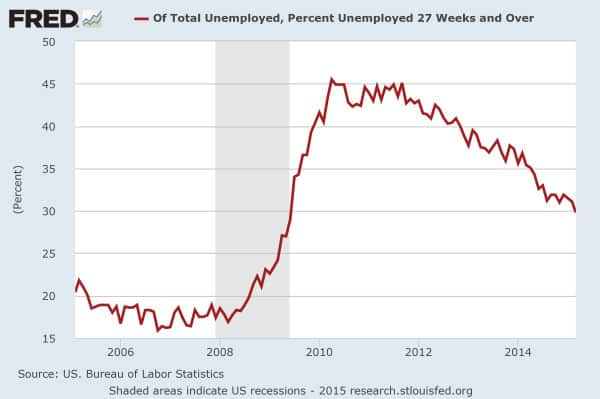 Good Friday brought bad news. The economy ended its streak of robust job creation in March, with employers adding a disappointing 126,000 jobs. It was far fewer than most people expected and broke a 12-month streak of 200,000-plus gains. Adding to the bad news, the Bureau of Labor Statistics revised February’s tally down to 264,000 from its original estimate of 295,000.
Good Friday brought bad news. The economy ended its streak of robust job creation in March, with employers adding a disappointing 126,000 jobs. It was far fewer than most people expected and broke a 12-month streak of 200,000-plus gains. Adding to the bad news, the Bureau of Labor Statistics revised February’s tally down to 264,000 from its original estimate of 295,000.
On the plus side, the unemployment rate held steady at 5.5 percent, within the range of what the Federal Reserve considers “normal” unemployment. In fact, unemployment approached what policymakers consider full employment, meaning that most people who want a job can find one. The last time the economy posted normal unemployment two months in a row was in 2008.
Not so fast, though: The unemployment rate may be normal by the Fed’s definition, but the labor force has changed a lot in the past seven years.
Last month, 6.7 million Americans took part-time work because they couldn’t find full-time jobs; that’s a million more than in 2008. An additional 1.3 million had been unemployed for at least six months in March. And more people have dropped out of the job market completely — labor force participation was less than 63 percent in March compared with 66 percent seven years ago.
The economy is still far from normal, no matter what the numbers say.

‘Normal’ Unemployment: It’s Not What It Used to Be
- BỞI System Admin
- Ngày 23/11/2024

